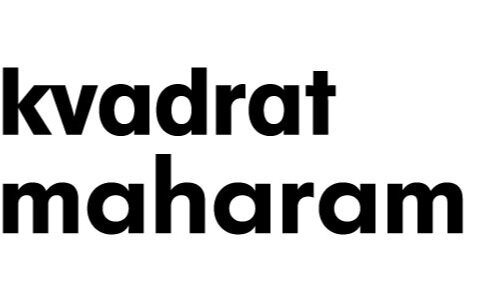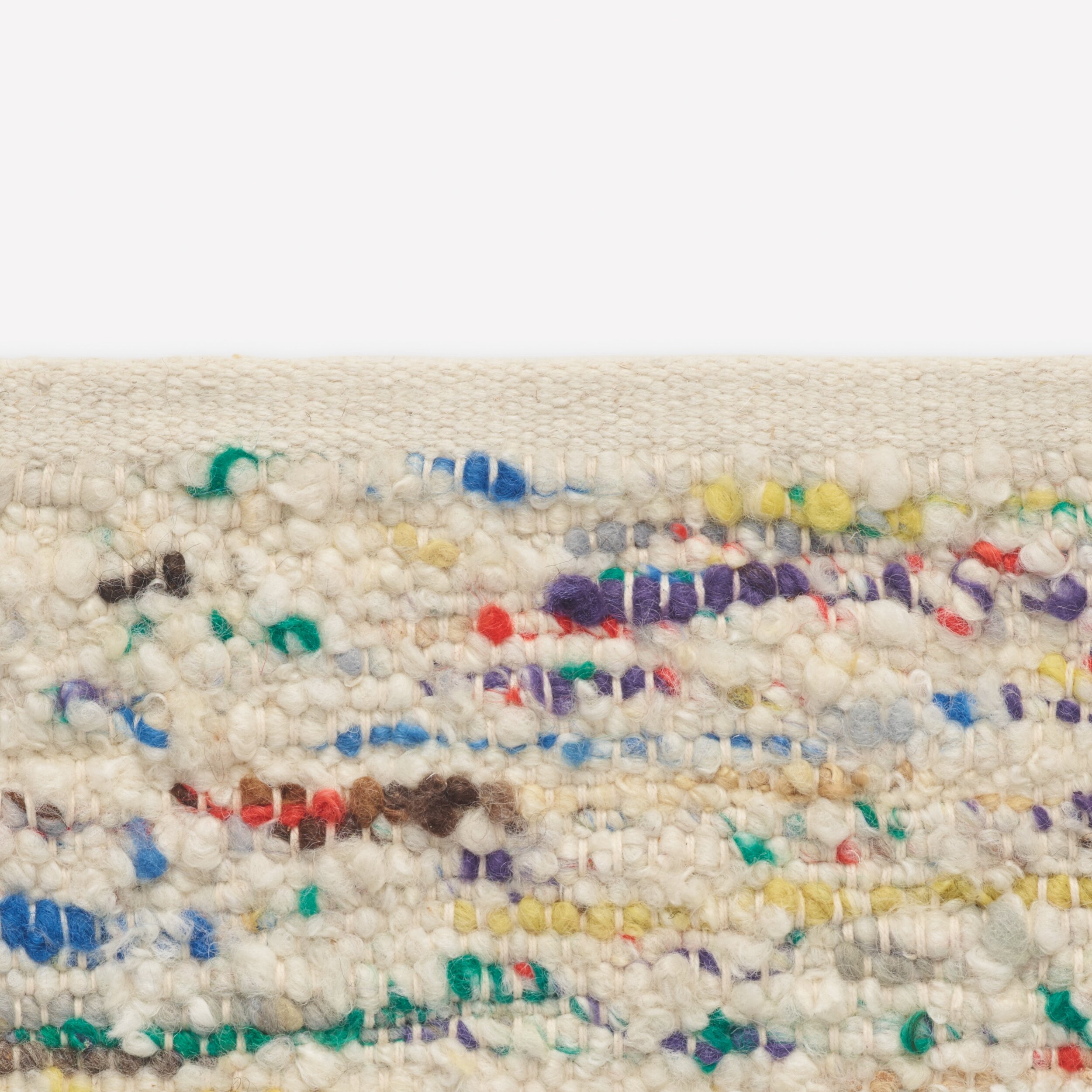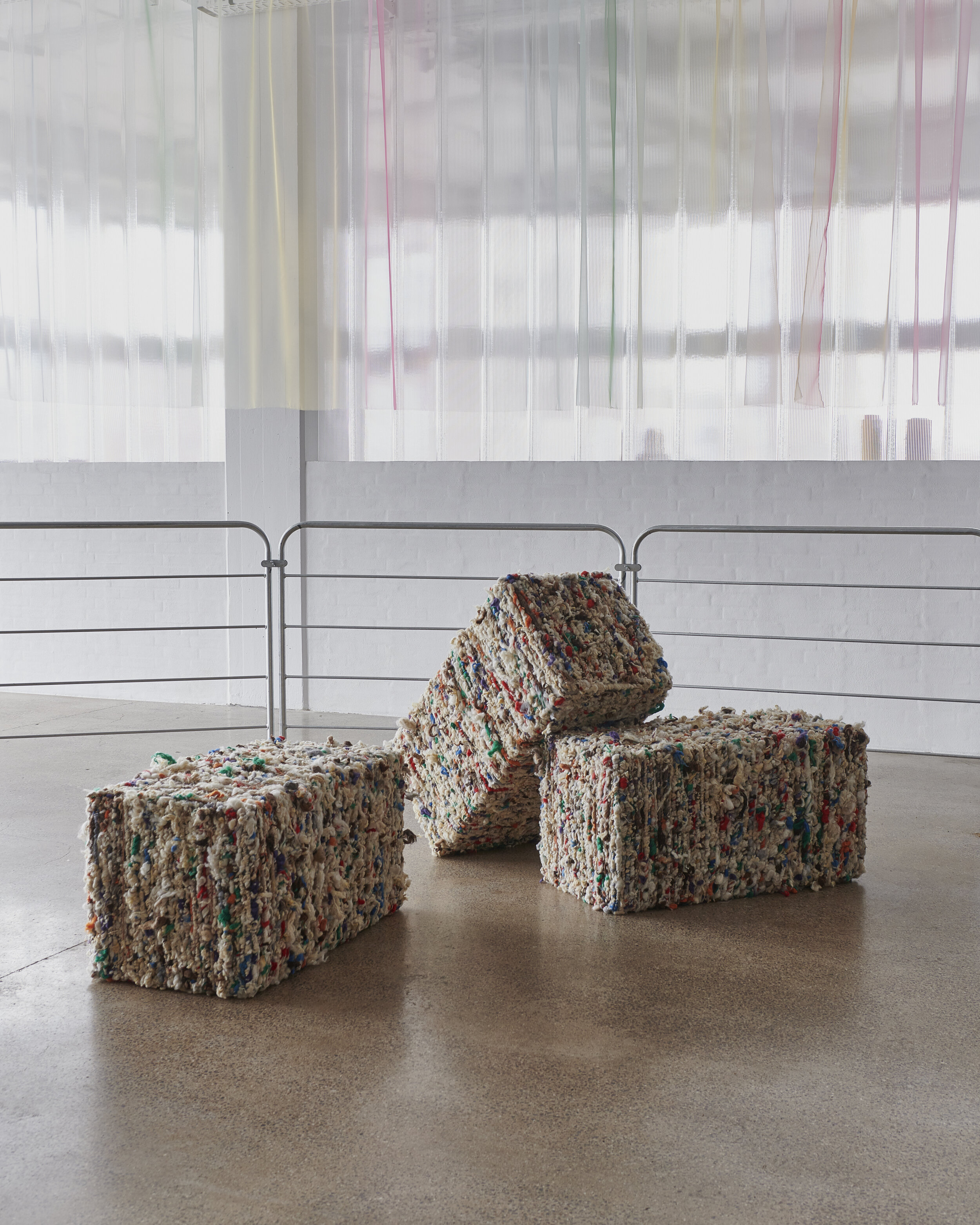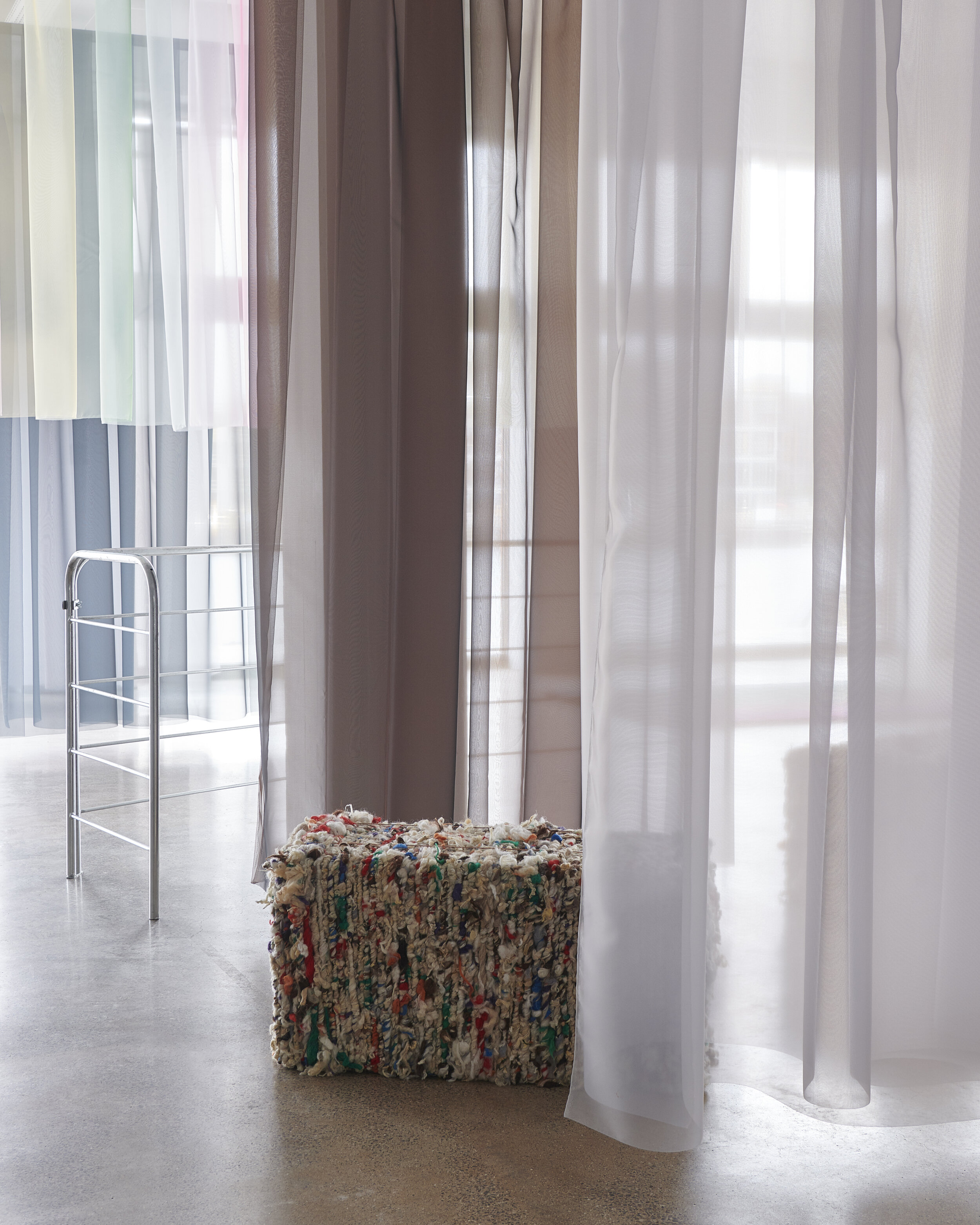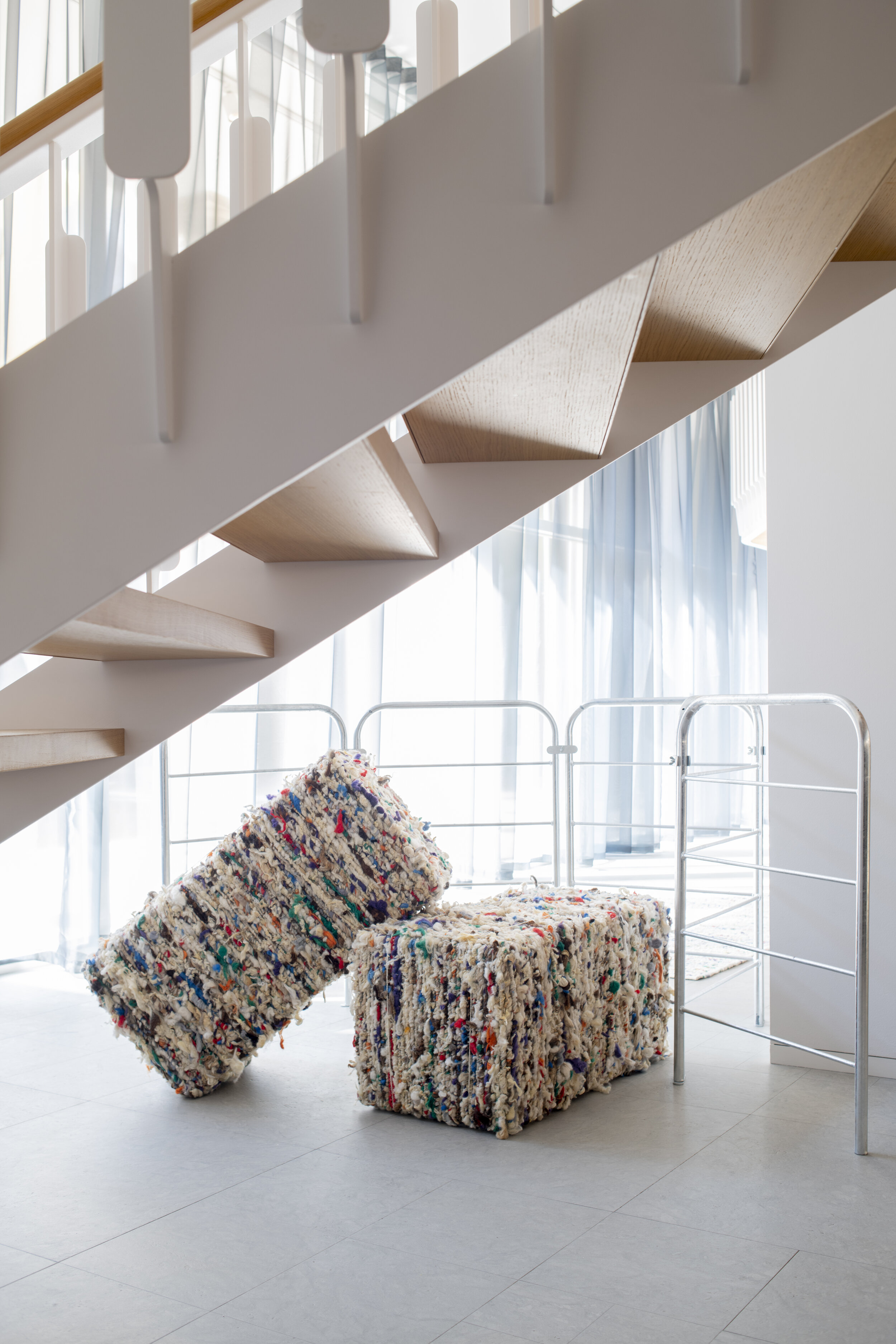Technicolour by Peter Saville for Kvadrat
The celebrated collaboration between Kvadrat and Peter Saville opens a sensorial, thoughtful new chapter in 2021 with the launch of Technicolour – a craft-orientated, sculptural collection that visually and haptically translates the industrial processes in textile production. The name relates to the spectrum of bold hues commonly used to mark flocks of sheep that are spectacularly incongruous in pastoral settings.
To mark the launch, Peter Saville, a long-term creative consultant for Kvadrat, conceived a presentation that was exhibited at Kvadrat’s Copenhagen flagship showroom for 3 Days of Design, as well as the Milan showroom during Salone del Mobile, and the London showroom during London Design Festival. Insightful and playful, it explores the narrative of the collection, which arches from agricultural to industrial, and reminds us that nature is not just a place to visit – it’s our home too.
Journey from pastoral to industrial
Controlled accidents and traces of the reality of nature are expressed throughout Technicolour, which exemplifies Peter Saville’s eye for articulate colour compositions. The collection has its roots in the curiosity he’s always had about the random industrial-coloured markings on sheep which he first observed on family holidays in Wales. Peter has likened this to ‘rural graffiti’.
Technicolour comprises an upholstery, three rugs and two curtains. The upholstery and the rugs are meticulously crafted from the finest wool – which is naturally coarse – and reference, through seemingly haphazard colours and rich tactility, the character of stock-marked fleeces. At the opposite end of the haptic scale, the curtains in the collection are woven from smooth, subtly iridescent Trevira CS.
“I am excited by how the collection brings the industry of the land, in raw form, into the living environment. The collection elements offer an experience of texture and colour, ranging from the expressionistic to the subliminal” - Peter Saville.
The upholstery textile, is discreet yet dramatic. It mixes random flecks of bright yellow, blue and red against a natural-coloured wool ground. It becomes transcendent once it’s upholstered, almost as though you’ve spray painted the wool fibres onto your furniture. The textile also offers a robust environmental profile: it is crafted from locally sourced English wool, unusually, without synthetic fibres.
The two curtains in the collection, share the same yarn composition yet are distinctively individual. Flux, more outspoken and more densely woven, features a rainbow pattern consisting of bold vertical stripes in a repeat of eight shades. Fade is a transparent, full-bodied curtain constructed with three different yarns in three almost neon hues. When draped, its somewhat neutral look comes alive in the light as a play of vivid nuances emerges from its folds.
The Technicolour rugs, which are handwoven and tufted by robots, explore different dimensions of the collection’s concept. Two are crafted from pure new wool: Flock takes a more pastoral perspective while Fleece embodies a more urban attitude. Meanwhile, Field, composed of fine bamboo yarns, takes an industrial approach to colour and colour gradations.
Flock evokes a strong connection with the sheep that provided the wool for its construction. It features richly voluminous, irregular weft yarns created by randomly spinning coloured flocks of wool by hand. Fleece features random sparks of colour naturally sprinkled across an irregular, soft, unsheared surface that recalls natural fleece. Meanwhile, Field unites hues, reminiscent of sheep markings, into an eye-catching linear gradient.
Peter Saville
Peter Saville exists in a territory of his own. His practice occupies a space between art and design, and his unparalleled approach has resulted in a unique contribution to culture. This hybrid position came into being partly through the unprecedented autonomy afforded to him, aged 22, as co-founder and art director of the legendary independent UK label Factory Records.
Unlike most ’commercial artists’ of the time and indeed since, Saville was free to design without approval. Making his art in the context of mass production, he accessed an audience through pop music, best exemplified in the series of record sleeves he created for Joy Division and New Order between 1979 and 1993.
His achievements were celebrated in The Peter Saville Show at the Design Museum in London in 2003. His first major show in a contemporary art museum was at the Migros Museum in Zurich in 2005. He continues to exhibit internationally.
Explore more Technicolour by Peter Saville here.

